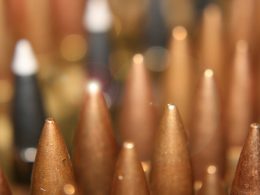In this Article:
Two does were standing, right at last light, in the stubble of a cut bean field across from our house around 80 yards away – or so I thought. I selected the nearer of the two and raised my revolver. Without a laser range finder, I made a “best-educated-guess†as to the range. I pulled the hammer back and centered the red ramp of my 8 3/8-inch Smith & Wesson Model 629’s front sight in the white-outline rear sight notch, top edges level on her. I put the ramp on the doe’s shoulder, as I had done many times (and deer seasons) before. I pulled the barely-three-pound trigger, and the gun barked. When the front sight had come back down, I saw the deer down in the field. After an appropriate amount of time had passed, I walked out to where she lay. I gave thanks for her and proceeded to do the necessary steps to finish the hunt. The gun had definitely done its job, as had the load. I was shooting a factory 240-grain JHP .44 Special (yep, special-not magnum) load from Georgia Arms. This was one of the very rare times that I was using any kind of factory load, being the unrepentant reloader I am. The load had behaved perfectly. I had filled my tag, and our local food pantry would be the beneficiary. That 629 is some gun. And, when I had stepped off (and measured with a tape in the days before I had a laser range finder) the distance, I found it to be 105 yards. I am not in the habit of taking deer much past 75 yards with an open-sighted revolver, but the conditions made it a bit difficult to judge the distance accurately. The field was open and flat, the light was there but was on its way out, and my yardage markers were hidden from my vantage point. Anyway, the hunt was successful due in no small part to that stainless steel wonder.
I know not all of you hunt, but I couldn’t think of a better way to introduce this comparison. I am going to discuss the differences between single and double action revolvers, and this is one way to start that commentary. The other handgun I’ll use in this comparison is my 5.5-inch Ruger Blackhawk revolver in .45 Colt, which has an included .45 ACP cylinder that comes in handy. I likewise took a deer with that .45 Colt 2 years after the one described above, again right at 100 yards. This time, it was with my home-cast 260-grain flat-point cast bullet at around 950 f.ps. She went down quickly, as well. Both were clean kills, using revolvers designed for that task. The Smith and Wesson is a double-action (DA) revolver, while the Ruger is based on a mightily upgraded and updated version of the old single-action (SA) army handgun. These guns are two that I will hang on to.
Single Action Revolvers
The single action revolver has been around for over a century. The one that we usually refer to in discussions of the development of modern sidearms is the Colt Single-Action Army (SAA). This revolver was adopted and introduced to the military in 1873, at which time it was issued to our troops. The original barrel length that went to the military was 7.5 inches, but the civilian market was fortunate to have two other lengths available when the gun was released for general sale. These additional lengths were 4.75 and 5.5 inches. During the Philippine Insurrection of 1899-1902, our troops were fighting with the then-issued sidearm, a revolver in .38 Colt caliber. This round proved to be inadequate in stopping power, much to our troops’ dismay. The tribesmen would bind their bodies with grasses and other material and then would take a naturally-occuring (plant-based) pain inhibitor…in other words, they would get high, and then they wrapped themselves in a crude body armor of sorts. They would absorb the anemic rounds of the .38, yet keep coming to inflict mayhem with their spears and other edged weapons. When the Army broke out the .45 Colts, that did the trick. Here’s an interesting side note – when the old Peacemakers were re-issued to our troops fighting in the Philippines during that conflict, their barrels had been shortened to 5.5 inches. Thus, the “legendary†.45’s reputation was enhanced.
The tribesmen were no match against a well-placed .45 Colt bullet. (For more on that conflict, go here – it’s an interesting read). Another side note – this conflict went a long way in convincing our military that a different sidearm (pistol) was needed. This led, in time, to the military trials that culminated with the adoption of the “Automatic Pistol, Caliber .45, M1911â€, or the Colt semi-automatic .45 pistol. This gun was a single action, as well – it needed its hammer cocked before it could be fired. And, the old warhorse 1911 single-action pistol is probably more popular now than at any other time in its history. Some designs just endure, single action or otherwise.
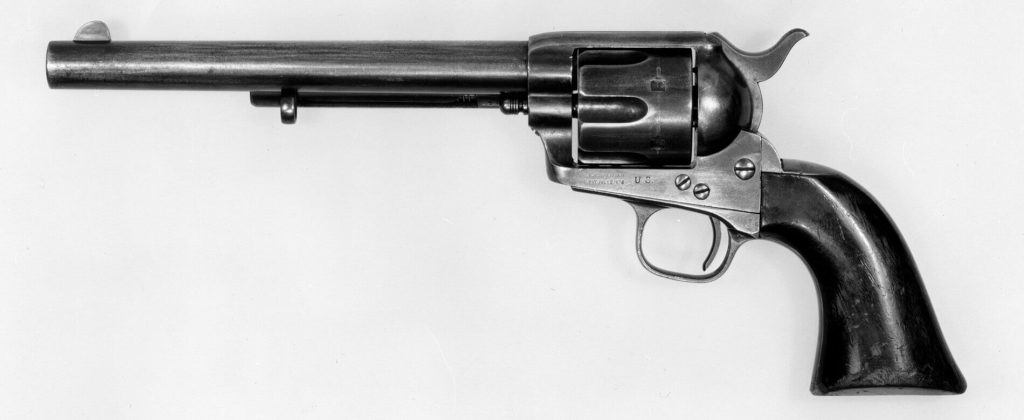
Reloading The Single Action
When you need to reload your gun, the SA tends to be a bit slower than the DA (in an average shooters’ hands). You must first open the side gate (and, in older designs put the hammer on half-cock), then rotate the cylinder to line up each chamber with the gate as you poke the empties out with the ejector rod. You load those chambers the same way, one at a time.
BONUS OFFER: Get your free shooting range targets to print at home!
Get your free targets to print at home!
Double Action Revolvers
The double action revolver first made its appearance in 1877. Colt introduced its double action Thunderer in that year in several calibers (.41 caliber shown in photo). The following year, the gun was chambered in .45 Colt, the standard-issue cartridge of the single action Army revolver.
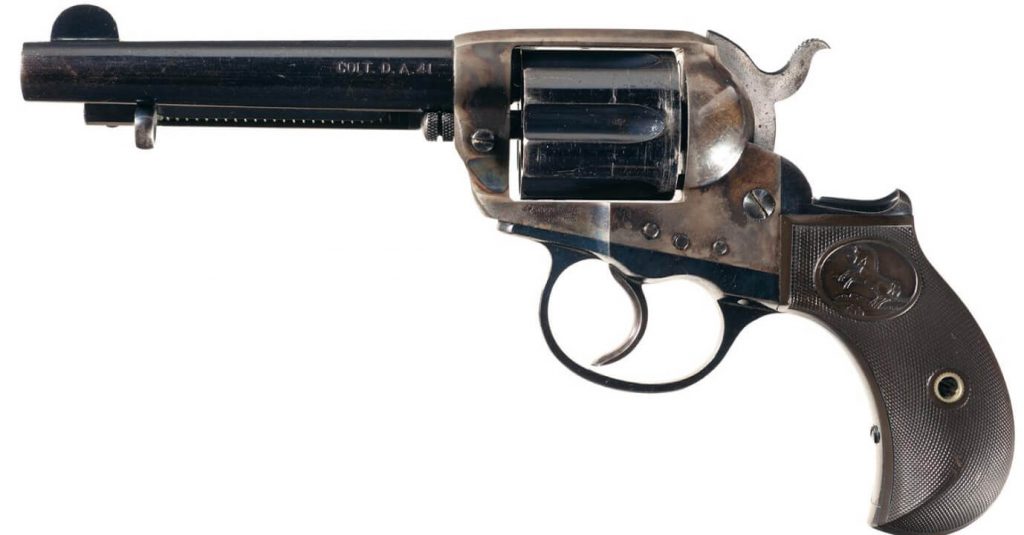
So, to define “double actionâ€, it simply means that, with by just pulling the trigger, you perform two actions – you both cock and fire the gun without having to first manually cock the hammer as you do in order to fire a single-action gun. Another definition that some shooters use for the double action gun is that there are two ways to fire it, hence double action. In an average shooters’ hands, the double action gun can be faster to get into action since you don’t have to thumb a hammer back. The double action revolver was the military/law enforcement handgun of choice for many decades and is still going strong today.
Here’s an illustration of how the DA revolver works…
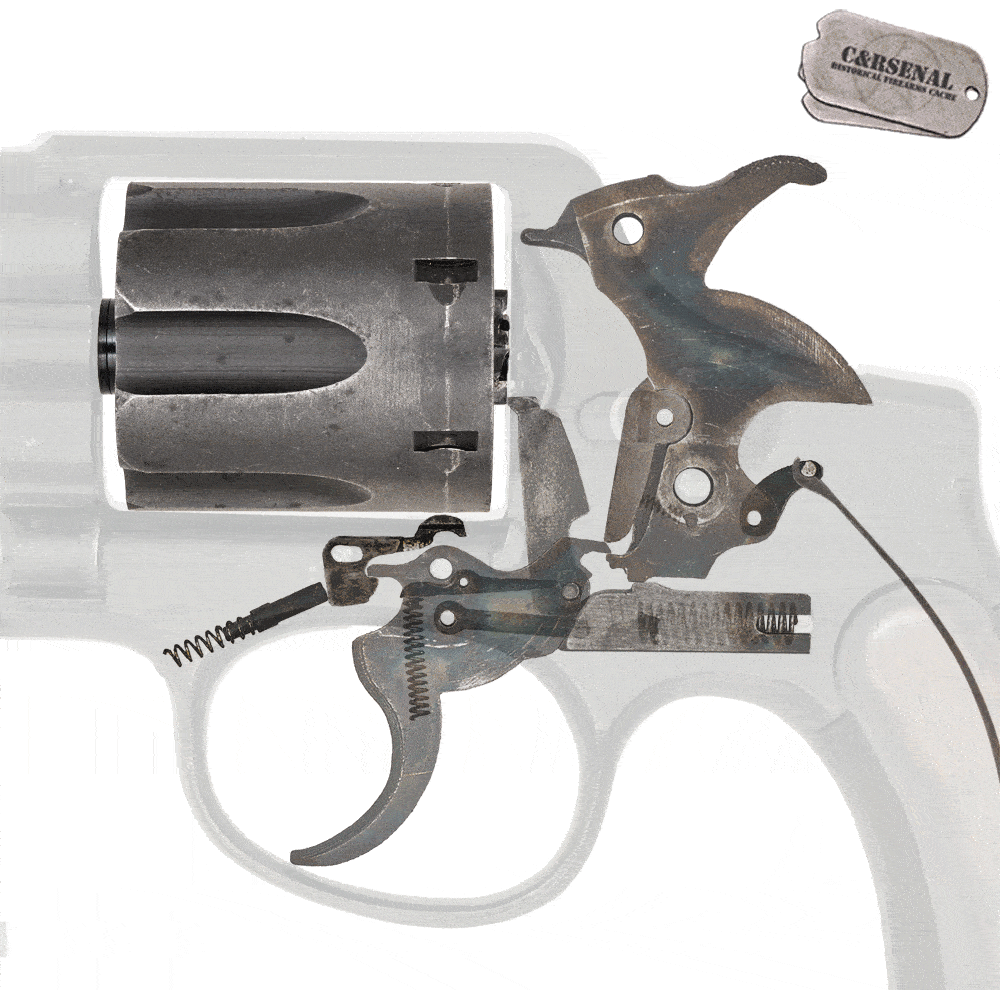
And, here’s an illustration of single action, double-action-only and double action/single action guns…

Reloading The Double Action
To reload a modern DA revolver, if it a typical type that has a cylinder that opens to the left side such as Smith & Wesson, Taurus and others, press forward on the cylinder release. Ruger guns will have you press the release inwards on the cylinder release and swing the cylinder out. The last variation is Colt – those revolvers will have the shooter pull the cylinder release to the rear. Press on the ejector rod with the muzzle pointed up, emptying the chambers all at once. Reload the chambers either singly or by using a speedloader of sorts and close the cylinder. That’s pretty much it. Most beginning shooters can reload a DA revolver more quickly than they can a SA gun, by and large.
Popular Articles
So…What Do I Buy?
If you are in the market for a revolver, first off, good for you…the revolver market is not as active as is that for the semiauto, but the wheelgun still serves a purpose. A lot of folks who are new to shooting buy a semiauto, only to find that the drill for its use is a bit more than they thought it would be. Granted, there’s not a thing in the world wrong with starting out with a semiauto but you need to be at least familiar with the training that you’ll need to put in with it. The revolver requires training as well, but some shooters feel a bit more at ease with a gun that is quickly and easily identified as being loaded or not and that doesn’t have a magazine to either misplace or damage. Wheelguns still have their place. Now – that leads us to the next question…
What Will You Use It For?
Let’s look at some uses that your revolver will need to fulfill. Let me state right up front here that there are exceptions to anything I’m going to list here. I am simply going to recommend guns based on my experience – you may have other ideas, which is fine. Nobody bestowed upon me the All-Knowing Mantle Of Handgun Knowledge, or anything like that. My thoughts and recommendations have simply been formed by over 40 years of shooting, but I’m not the king of all that Is handgun. Anyway, here are some suggestions…
Formal Target
If you are wanting a target gun for formal competition, either style would work but the DA gun with its usually-better SA trigger and sights will probably be more likely to satisfy the shooter. You can have a single action tuned for this, but if you are going to stick with a stock gun, start with a DA revolver.
Plinking/Informal Target
If all you are wanting to do is ventilate tin cans on a Sunday afternoon, either a SA or a DA revolver will fill the bill. It should, preferably, have adjustable sights and a decent trigger but even an inexpensive six-shooter will provide an afternoon of fun as you bounce tin cans along a bullet-ridden path and break balloons or other fun (but safe) items. Time for a personal plea…under no circumstances that I can conjure up in my mind should you shoot at glass items. I remember what noted handgun expert Jeff Cooper said in his treatise “Cooper On Handguns†that the only place glass should be shot at and broken is in the ocean, but that’s probably not such good advice in this day and age. Anyway, shoot for fun but be safe. There are many interactive targets out there that are safe to shoot and that will give you immediate feedback if you hit them.
Hunting
In my experience, either style will work and I’ve used both successfully. You will need good, adjustable sights and a creep-free trigger that breaks smoothly and crisply. A longer barrel will tend to give you a bit more velocity (but probably not as much as you think it will) and a longer sight radius, but shorter barrels are handier. This is your call. I’ve taken everything from squirrels to deer with my S&W .44 Magnum (yep, even squirrels…the medium-velocity hard-cast bullet just poked through them without tearing up much meat, check out our article on .44 magnum revolvers). It has worked very well, but so has my Ruger Blackhawk in .45 Colt. That bullet is even bigger than the .44s’ and it does tend to hit deer with authority. Choose whichever gun you shoot the best. Another thought – sometimes aftermarket grip panels will help you to dial in your groups more as they allow you to control the gun to a greater extent than the “one size fits most†factory panels. Check Hogue or Pachmyer grips out – they are good and I’ve used both. And, in a hunting blind, split-second reloads usually aren’t called for so a single action with its built-in slower reloading time over a double action doesn’t matter as much. So, either style of gun works for hunting.
And, the category we’ve all been waiting for…
Self-Defense
Here we go…what do I recommend for self-defense? Well, are we talking carrying a concealed revolver or home defense? That matters. For concealed carry (red more about CCW insurance), unless you’re Wyatt Earp’s fifteenth-cousin-twice-removed, I’d recommend a double action revolver over its single action relative. So, what does a new shooter need to consider? Here’s where it gets a bit sticky…if you are a brand-new shooter, I wouldn’t buy a snub-nosed revolver. Any barrel length less than about 3.5-4 inches or so is hard to control in recoil for most newbies, plus consider the fact that the shorter tube lends itself to being pointed at places it shouldn’t be – like your leg. A new shooter has enough to think about. And, trigger control is another issue. If he or she wants to pick up a 4-inch .38 Special (or even .357 Magnum, with .38 Special ammo), that gun might lend itself to being an effective defensive gun. I mentioned .38 Special and .357 Magnum revolvers, but would other calibers work? Of course. You should carry what you shoot well and are comfortable with. I might re-think carrying a .22, but that little round has done in way more than its share of folks over the years. There are even 9mm revolvers, but I’d steer clear of those for a beginning shooter – the rimless case presents extra problems that the shooter doesn’t need to deal with. The newer .327 rounds are proving to be effective, plus they don’t kick as much as some of the others.
What about an experienced shooter? Can they handle a snubby? It depends on the shooter – that’s something I wouldn’t know, as shooters tend to have differing skill levels. If a person can handle one, a snubby makes an effective carry gun – but only if they can handle it. Experienced shooters are also usually a bit more capable of handling more powerful calibers, like .357 Magnum, but even that round in a small gun is a handful to say the least. It can hurt to shoot it more than a few times, with an accompanying drop in accuracy and increased flinching.
Home Defense
So, we see that maybe a DA revolver in one of several calibers might be the way to go if you want to carry a revolver…what about home defense? Here, revolver type isn’t as critical. A SA gun has its place on a nightstand for those trained in its use. Just be aware that, even though both types of gun can put lead downrange very quickly, the SA is generally slower to reload than the DA, as I touched on above. This can be a concern but it doesn’t cause those out there with a single action gun (either revolver or semiautomatic) to lose much sleep.
BONUS OFFER: Get your free shooting range targets to print at home!
Get your free targets to print at home!
Shooting Both Types Of Revolver
I’ve owned and shot both types of revolvers for several decades and have come to a few generalities about them. Now – are these carved into rock somewhere? Nope, and there are exceptions to what I’m about to say here but in my personal experience with revolvers, these things tend to stand out overall…
The single action revolver usually (without custom work) has a slightly rougher, harder trigger pull than the double action (in its single action mode). Its “plowhandle†grip allows the gun to roll upwards in recoil, which tends to mitigate fast follow-up shots. Also, with stout loads, the SA sometimes allows the trigger guard to “whack†my second finger pretty severely. The “Dragoon†style, prevalent on the Ruger Super Blackhawk, is supposed to help with that but (on mine at least) didn’t help much.
In terms of hitting your target, the SA works well and is every bit as accurate as the DA with proper loads. Speaking of loads, the modern SA (all else being equal) might be able to handle stout loads a little more easily than the DA, due to the mechanisms involved – again, in my experience. Your results may be different. It’s just that it seems that a fine DA revolver might need a trip back to the factory for timing work if it’s shot with really heavy loads more often than the SA gun will require.
The double action revolver tends to have a smoother, lighter trigger pull, especially when thumb-cocked. The lock time seems a bit faster on the DA gun, but that’s my opinion from shooting both types. In terms of grip, the DA revolver’s grip set-up usually has the gun coming more straight back in recoil as opposed to the SA’s muzzle rise. Each shooter will have to decide which style of grip they like best, of course. Another difference I’ve noticed, as stated above, is that I tend to shoot more mid-range loads in my DA S&W 629, whereas I am not afraid to put elephant-thumpers through my Ruger Blackhawk .45 Colt. (I just have to watch recoil levels – the older I get, the more sensitive I get). The shorter-barreled DA makes a fine carry gun, as well.
Similarities Between Both – There are many similarities between both types of revolver. When I am gearing up for a hunt, I tend not to fret much over which gun to take. To tell the truth, I think more about barrel length than cartridge effectiveness – the 8 3/8†barrel on the 629 takes more effort to carry and wield than the shorter 5.5†one on the Ruger. In terms of ballistic effectiveness, there isn’t much difference. Deer have fallen to both. In terms of sights, a quality revolver will have quality sights. I don’t see a difference between the provided sights on either gun, except for the longer sight radius on the 629. The S&W does have cuts on the top of the barrel for scope mounts, but I like iron sights on revolvers – I had some trouble using that gun with a scope mounted on it. It was just too much.
For those who may be interested in one of the two guns featured here, here are some specs for both of them:
Specifications: S&W 629, Ruger Blackhawk .45 Colt
| S&W 629: | Ruger Blackhawk: | |
|---|---|---|
| Caliber: | .44 Magnum | .45 Colt (included .45 ACP cylinder) |
| Action: | DA/SA | SA |
| Trigger Pull Weight (measured, avg. of 10) | DA: 8 lbs, 8.2 oz; SA, 2 lbs., 10.7 oz. | SA: 2 lbs., 8.7 oz. |
| Overall Length: | 13 7/8" | 11 3/8" |
| Weight: | 48 ounces | 40 ounces |
| Barrel: | 8 3/8" with partial underlug | 5.5" with underlug ejector rod |
| Capacity: | 6 rounds | 6 rounds |
| Sights: | White-outline adjustable rear, red ramp front | Adjustable rear, ramp front |
Now that we’ve looked at both types of revolvers and their uses and differences, let’s look at how they shoot – at least my representative pair.
The Shooting Experience – Your Grip Matters
When I shoot revolvers, no matter if they are SA or DA, I tend to hold the gun a bit differently than when I shoot one of my semiautos. Without fear of slide bite, I can hold the revolver in such a way that maximizes my grip on it. When shooting autoloaders, I use a thumbs-forward grip. With a revolver, I tend to place my support thumb in the well between my strong hand’s thumb and forefinger, pressing down on the revolver’s backstrap. This is the grip I use whether shooting the gun offhand or from the bench – it just allows me a tad bit more control over the recoil. I know – most shooters tend to use a thumbs-forward grip on whatever gun they shoot, be it a wheelgun or a self-shucker. I learned a long time ago about the barrel-cylinder gap and how it will remind you of its existence if you get a finger or thumb near it. I’ve shot some snubbies with cylinders so short that even my average-sized right thumb (I shoot left-handed) painfully picked up a bit of gas coming from said gap, so a long time ago I altered my revolver grip so as to avoid that. It may not be technically right – if I were to attend a revolver class, that might be one of the first things the instructor has me change – but it works for me.
Once you have either type of revolver hammer-back and ready to roll, there really isn’t much difference between the two (except that the SA trigger pull might be a little coarser). The main difference lies in being able to fire the DA gun by simply pulling the trigger, but I have never used this technique in the field. (For self-defense, the revolver will be fired from the DA hammer-down position). I remember reading in Shooting Times magazine many years ago a piece by writer Bob Milek. His article dealt with taking a white tail deer using a DA revolver, in DA mode. He did not thumb-cock the gun before shooting. I would imagine that happens a lot nowadays with our fine revolvers, but back then it was so novel an editor paid him to write about it.
Anyway, I have many targets I’ve kept over the years that I’d shot with both guns – I keep them for load development purposes. Here is one sample target from each gun. (And, yep, you’re right – I’m such a cheapskate I make up my own targets and print them at home). First, the Model 629 .44 Magnum:

Now, the .45 Colt…

What do these targets prove, other than that I’m not the best shot in world? They are simply proof of an ongoing quest for the most accurate handload I can put together. I could post several other targets, but I think you get the point. These guns are way more accurate than I am, and I believe you can extend that out past just these two guns to include both kinds of revolvers in general…most every wheelgun I’ve shot over the years has been capable of outstanding accuracy. I could count on the fingers of one hand those guns that weren’t very accurate intrinsically, usually due to sloppy cylinder lock-up or horrible trigger. At any rate, the game I’ve taken with these guns testify to their accuracy.
I just mentioned load development – before I end this piece, I want to touch on handloading and revolvers.
Loading For Revolvers – Either Style
Loading for revolvers is a bit different than loading for semiautos. Most semiauto rounds headspace on the case mouth, which makes overall case length very important. I’ve had experience with cases that were either too long or too short, which usually leads to malfunctions. Revolvers (for the most part) shoot rimmed cartridges. These round headspace on the rim, which allows the overall length to be important but usually not critical – unless it’s way too long. The important thing to take away from this is this… even an overly-long case length or overall cartridge length will most probably safely fire in a revolver, but may cause an autoloader to stop in its tracks. Now, this is a generality, of course – you really do want to keep your rimmed brass trimmed – but at least the gun should work with a longer case. I keep my .44 brass sorted – I have some that had been aggressively trimmed and are shorter than specs say they should be. But, they will fire just fine in my gun. I may have to re-adjust my case mouth expanding die and my bullet seating die for them but that’s no big deal.
My Favorite .44 Loads:

My Favorite .45 Colt Loads:

It is important to keep good records as you go about your handloading hobby. Here’s a photo of my overall spreadsheet I keep on my loads, and the big three-ring binder – note the dividers, by caliber…
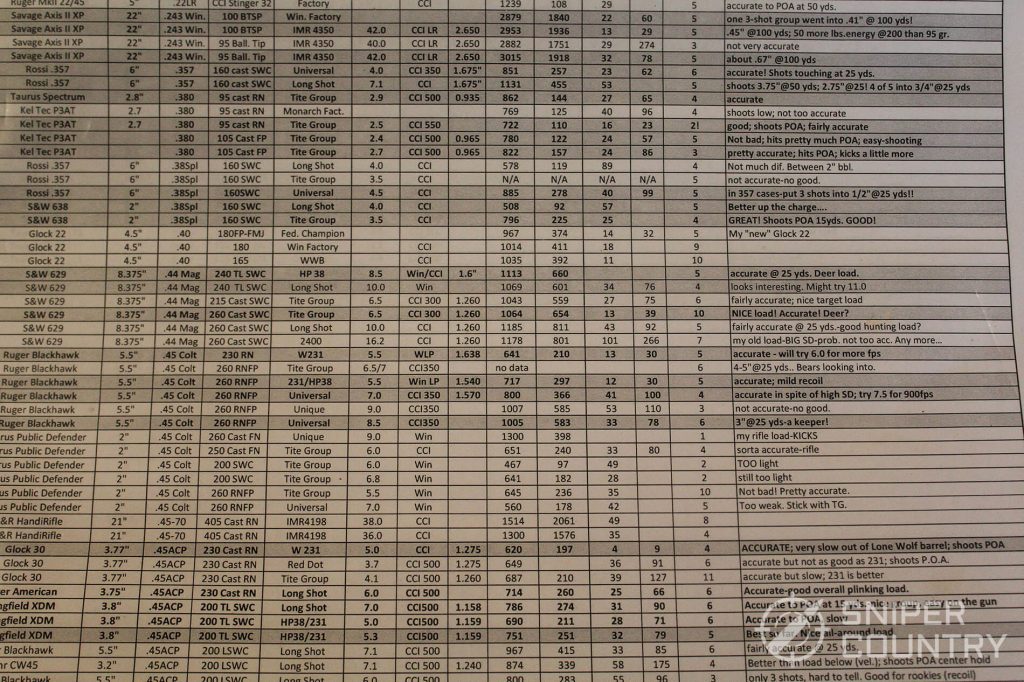

For a detailed look at reloading, check out my article on how to reload. Suffice it to say that either of these calibers are very easy and versatile to reload for. Or, let’s take it a step further…most centerfire revolvers adapt themselves to reloading efforts very nicely. Just remember that (all else being equal and we’re talking stock, standard guns) Ruger single actions and others built like them tend to be very strong – they will hold loads that I might hesitate to put through my cherished 629.
So – What Does All This Mean? Some Last Thoughts…
As I was getting into shooting about 40 years ago, the only semiautos to be found in stores with any regularity were 1911s. This was before the “wondernine†revolution and certainly before the polymer guns hit. Revolvers were where it was at – especially if you were a cop, because that was what was issued to you. But, times change. If you have only shot semiautos, you owe it to yourself to try a revolver. For concealed carry or fine target work, the double action is indicated. If you simply want to punch paper or try your hand at load development, the single action might be your huckleberry. And, if you are in the one percent of hunters who hunt with a handgun (that’s the statistic in my state), either flavor will work. Just make sure you do your research in terms of caliber, type of action and brand before plunking down your hard-earned cash. A really great way to introduce yourself to revolvers is by getting one in .22 LR – either a SA or a DA will provide you with hours of fun, bouncing cans and targets across the ground or by putting that front sight just over the fork of the tree, on Mr. Bushytail’s head. I’ve done it all, and can honestly state that I will always have revolvers in my collection. As always, feel free to leave your comment below. Now, go shoot and stay safe!

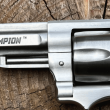
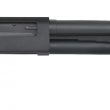
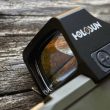






![9mm Glock Models [Ultimate Guide]](https://www.snipercountry.com/wp-content/uploads/2018/10/Glock-17-vs-Glock-19-vs-Glock-26-vs-Glock-41-vs-Glock-43-WM-400x250.jpg)
![Handgun Caliber Chart [2025 Ultimate Guide]](https://www.snipercountry.com/wp-content/uploads/2018/10/Handgun-Caliber-Comparison-400x250.jpg)
![Rifle Calibers [Ultimate Guide]](https://www.snipercountry.com/wp-content/uploads/2018/12/Header-1900-400x250.jpg)




